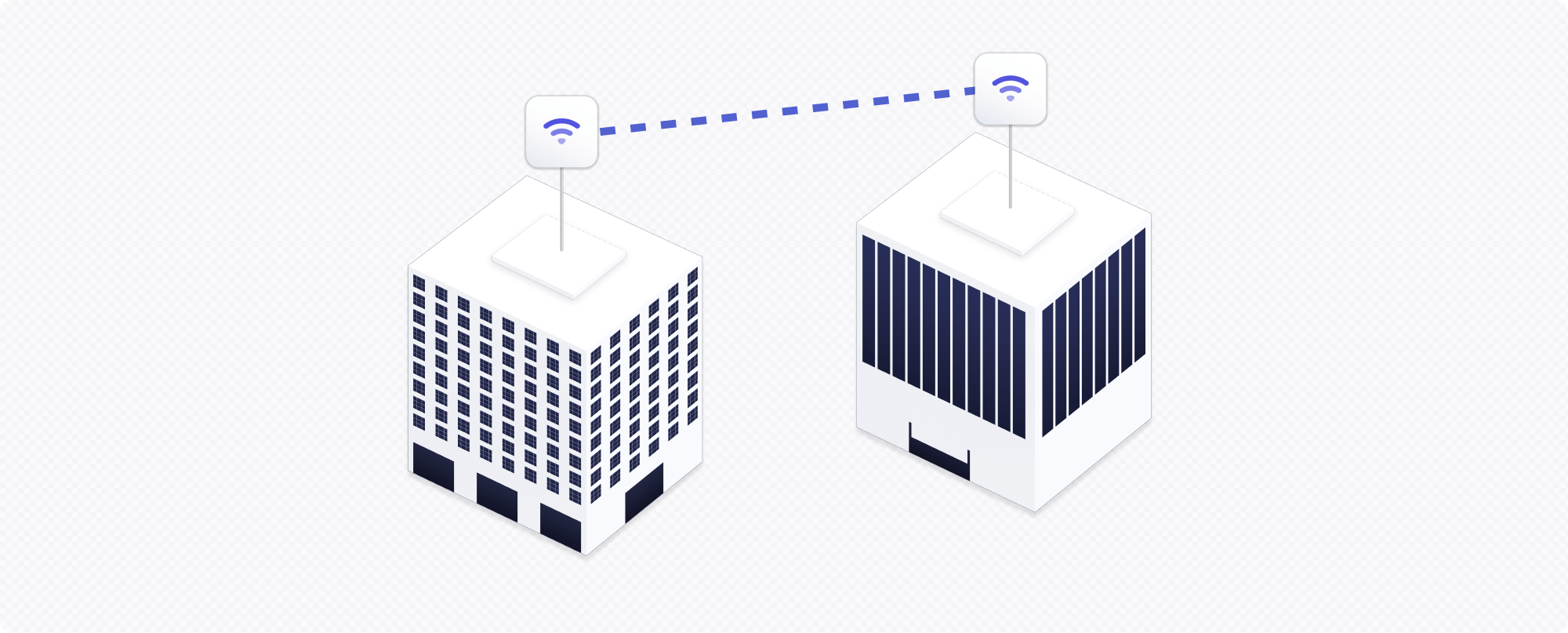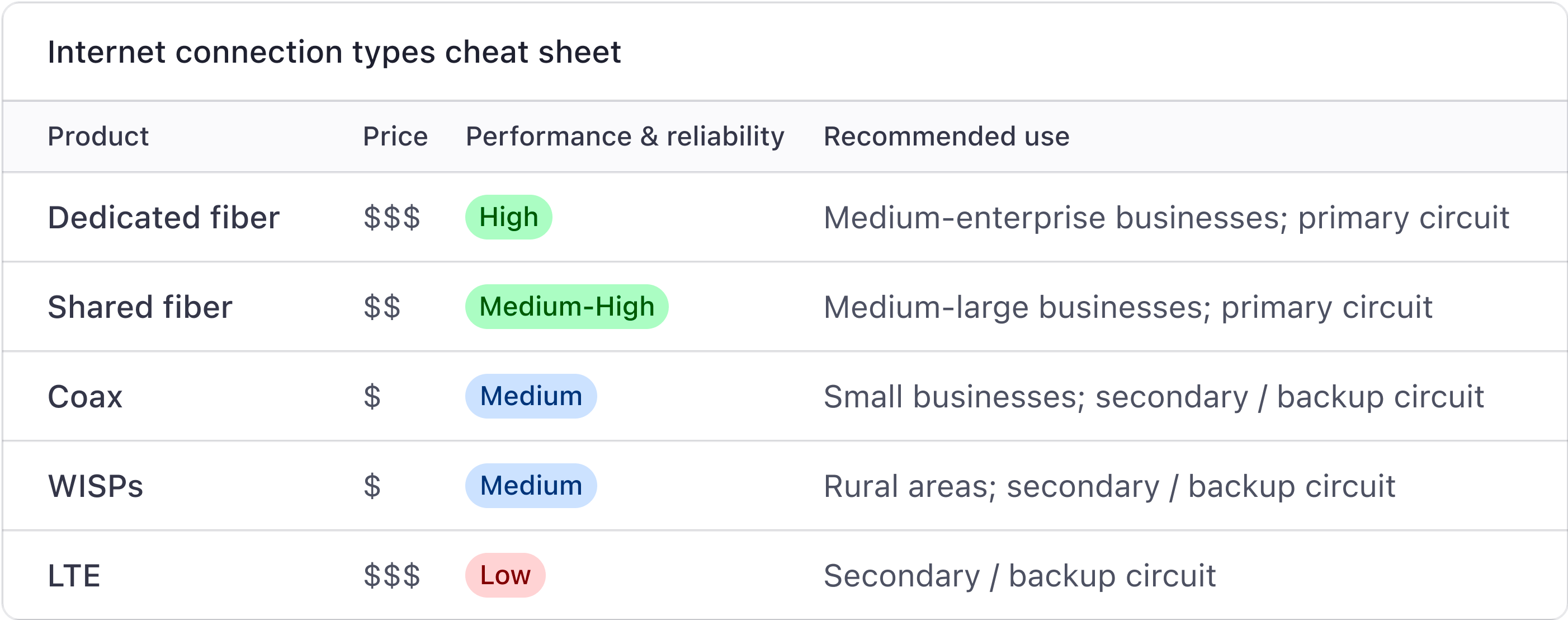What are the types of business internet connections?
When you are searching for a new business internet service provider, it can be overwhelming to understand what trade offs you are making based on the multiple products they offer. In this post, we’ll outline the different types of business internet connections internet service providers (ISPs) offer, and provide some recommendations on how to choose the best product for your business.
Fiber-Optic cables
Providers like AT&T offer two flavors of internet access: shared and dedicated. Here’s the difference:
- Shared fiber is shared between you and everyone else on the same street—apartments, houses, and other businesses—so your speeds and latency will change based on how much other traffic there is at the same time.
- Dedicated fiber only runs your business’ traffic, and therefore, you are not sharing traffic with anyone else on your street. It is also on more robust infrastructure. Generally, service-level agreements (SLAs) like minimum speeds, maximum downtime, and maximum latencies will be part of the contract agreement. If those agreed-upon parameters are not met, you will receive account credits as compensation.
How do you know which fiber plan is best for you?
Shared internet connections are more cost effective and are usually quicker to install; however, they do not have guaranteed performance standards and typically do not come with SLAs. We find them to be sufficient for most small and medium spaces (e.g., under 50 employees). If you require SLAs and guaranteed performance, you should opt for a dedicated connection.
Coax cable
Coax cable is a more affordable alternative to fiber-optic cable. It’s made from copper whereas fiber is typically made from plastic or glass. While Coax offers a cheaper solution, its performance starts to degrade after about 300 feet. It also cannot provide symmetrical speeds (i.e., upload speeds that are as fast as download speeds). If you need strong upload speeds (for things like video conferencing and data set uploads) and want a more reliable connection, you should consider fiber.
Wireless internet

Wireless internet service providers (WISPs) provide fixed wireless networks, which are networks of wireless communication devices that are typically fixed to a building or tall structure. They use a point-to-point signal to transmit an internet connection over a long distance, instead of relying solely on ground cables. The way this works is a fiber connection is run to a building and then connected to an access point on a leased space on top of the roof or another point in high-view. A wireless device then transmits the signal to other fixed devices who can relay the connection to even more devices in line-of-sight. Each individual business in a building with a relay site can then connect to the internet.
The advantage of fixed wireless networks is that they are more affordable than laying new cable infrastructure. They can also be installed very quickly, which makes them a good option when you need a more immediate solution. However, we have found that internet traffic through a fixed network can be affected by latency (the time it takes to transfer data), causing delays, therefore, they are not as reliable as fiber. We usually recommend WISPs as a backup link or in rural and remote areas where it’s difficult to connect to the internet since WISPs also tend to be more susceptible to poor weather conditions. There have been instances where a relay has fallen over due to extreme wind conditions.
LTE Wireless

LTE wireless (also known as 4G LTE) is provided by mobile carriers, and it relies on cell towers to transmit large packets of data. You’ve most likely experienced LTE when you access the internet via your smartphone. Businesses are able to connect to the internet via LTE, however, it becomes expensive very quickly, since wireless plans charge based on data usage, very similar to your personal cellular plan. In addition, since everyone on the LTE carrier’s network is using the same resource, and it's shared across a long distance, performance can easily be impacted. From our experience, we have found LTE less reliable and slower than WiFi when several devices are connected to LTE. We recommend LTE as a temporary and backup hotspot solution.
Internet connection types cheat sheet
What internet connection type is best for you and your business? We created a cheat sheet to quickly reference and summarize our recommendations here:

We know there are a lot of considerations and options when choosing an internet service provider, and we are here to help. Learn more about how to choose an internet service provider for your commercial space or get started by requesting free quotes from every local internet service provider.